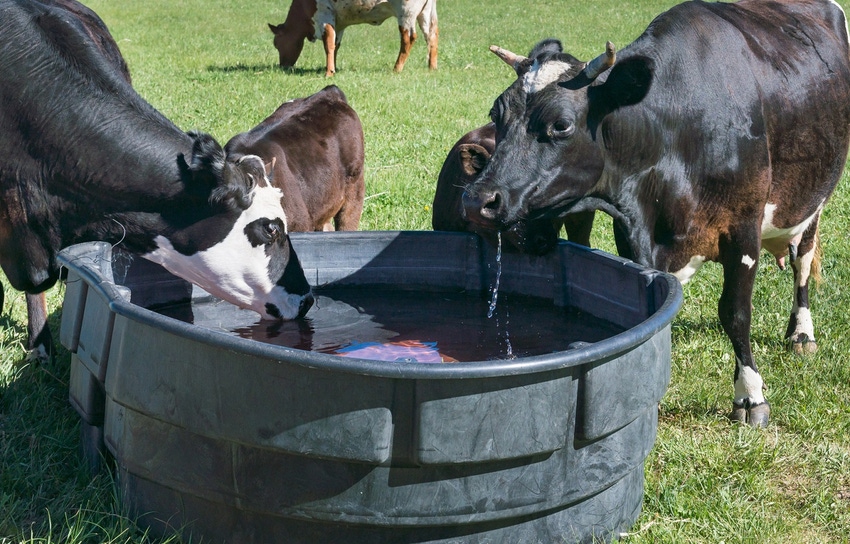December 19, 2018

Cash flow is important for the health of commercial enterprises, and the cattle business is no exception.
The short definition of cash flow is the amount of money flowing in and out of a business.
David Clarke of Kashoo, an accounting software company, describes cash flow as a water tank. “Water comes in at the top and drains out the bottom," he says. "To keep your tank full, you need more water coming in than going out.”
Positive cash flow occurs when a business is running smoothly with cash on hand to pay expenses and make capital purchases such as breeding stock and equipment. Negative cash flow causes producers to borrow money to keep the ranch operational. The loans are paid with future cash flow, which evidently decreases profit.
Profitable businesses do not always have positive cash flow. If cost of raising calves on a particular ranch is $750 and they are sold for $850 apiece, the business is profitable. But If the profit is used to buy a new double-cab, four-wheel drive pickup, the latest stock trailer model and two ATVs, a negative cash flow may result. Two primary ways to improve profit and cash flow are to reduce overhead cost and improve gross margin.
Reduce overhead cost
The Business Encyclopedia says overhead costs are those expenses associated with running a business that can’t be linked to producing a product. Overhead costs include items such as utilities, insurance and depreciation. Limiting depreciation costs by refraining from purchasing unneeded equipment is a great way to reduce overhead expense.
Jason Banta, Texas A&M AgriLife extension service beef specialist, lists a pickup, stock and flatbed trailers, welders, a tractor with a front-end loader, all-terrain vehicles (ATVs) and a skid-steer as routinely owned ranch equipment. Frankly, some items on this list may not be needed or justifiable, based on amount of use versus cost.
For example, Banta says, “A goose-neck stock trailer is probably not necessary if it is used to only haul cattle to market once or twice a year. Save depreciation costs by renting a trailer or hiring someone to haul cattle for you.”
“Unless you are a custom farmer or manage scattered blocks of land, a goose-neck flatbed is probably not justified. If the trailer is only used to haul equipment to the dealer for repairs, it is probably less costly to have someone to do the hauling. Another cost associated with large goose-neck trailers is that a one-ton truck is usually required to pull them,” Banta adds.
Improve gross margin
Gross margin is the difference between revenue and cost of goods sold, divided by revenue. It is expressed as a percentage. In a cow-calf operation, gross-margin improvement is achieved by reducing production cost and increasing sales revenue. Feed is one of the big expense items in a cow-calf operation, so the feeding program is a good place to hunt for ways to cut costs that won’t negatively affect production.
“There are some general economic rules to obey when planning and executing a feeding program. First, profitability of any livestock enterprise requires efficient utilization of available forages,” says Jason Johnson, extension economist for Texas A&M AgriLife Extension. “The second rule is that cost-effective supplementation should complement forage and not substitute for it nor impair animal forage utilization. There is a very big distinction between supplemental feeding and substitution feeding.”
Revenue is often improved by facilitating cow rebreeding while maintaining calving intervals, increasing pounds of calf produced per acre, minimizing feed cost per pound of calf sold and putting desired weight on calves as quickly as possible. A second way to increase revenue is by supplying buyers with what they want.
“In our business of buying and selling calves, you quickly learn which management practices return sales premiums,” says Jim Schwertner, Capital Land and Cattle Company. “Calves will sell for an additional $7 to $10 per hundredweight if a veterinarian issues a written certification that they have been weaned for 45 days and were vaccinated at two to four months of age for IBR, PI-3-, BVD, BRSV, Pasteurella and seven clostridial diseases including blackleg. They must have also been treated with a de-wormer. If calves are age verified, they would bring an additional five cents per pound.”
Adequate cash flow is not only important for business health, but it also allows the operator to maintain control.
About the Author(s)
You May Also Like




